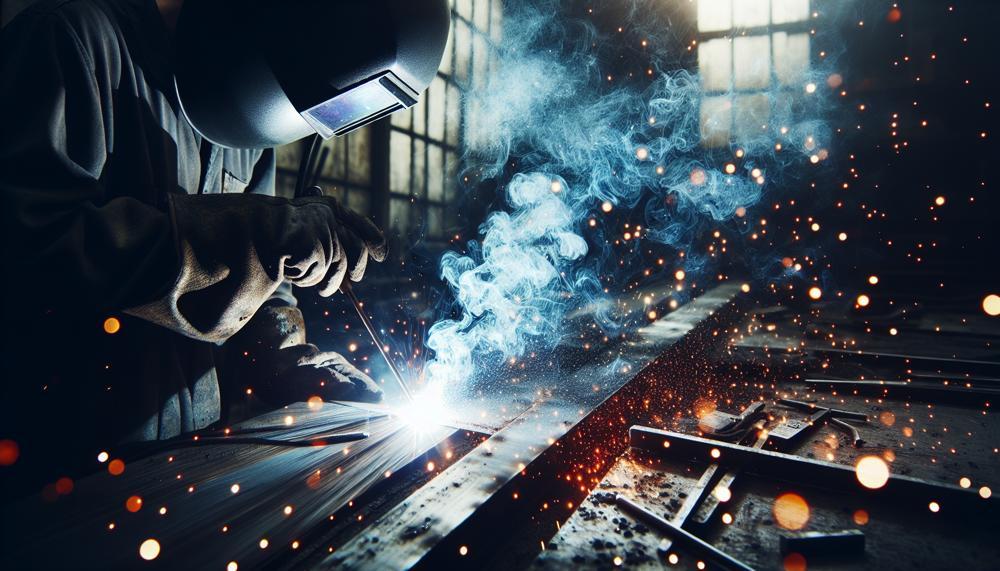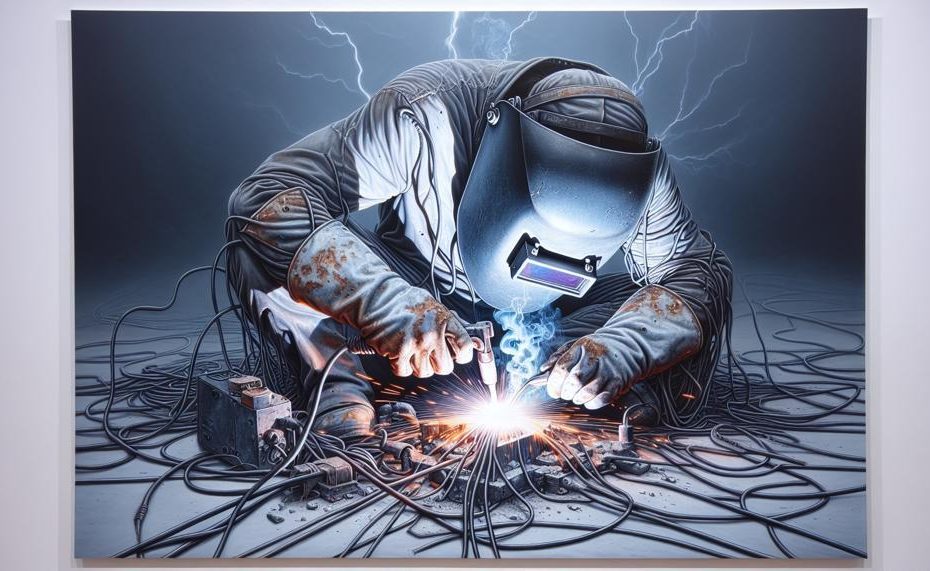Welding may seem like a simple process of melting and joining metal, but it is far from easy.
It takes precision, patience, and perseverance to create a strong bond between two or more pieces of metal. In fact, welding is considered one of the most demanding trades in the world.
Welders handle dangerous equipment. They also work with extreme heat and fumes. They face numerous challenges every day.
In this blog post, we will take a closer look at the world of welding and uncover the various obstacles that welders encounter.
Whether you’re considering a career in welding or simply curious about this intricate trade, read on. You’ll discover why it’s not for the faint of heart.
Contents
Is welding hard to learn?
Learning how to weld can be a daunting task, especially for beginners. Several factors contribute to the skill’s difficulty level. These include understanding equipment basics, safety precautions, and techniques.
In addition, different types of welding, such as MIG and stick welding, require specific knowledge and skills to master.
Proper preparation is also crucial in welding. This includes ensuring the metal being welded is clean and free of any contaminants. It also involves selecting the appropriate welding method based on the type and thickness of the metal.
The weld position also plays a role in the difficulty level. Welding overhead or vertically can be more challenging than flat welding.
Furthermore, the welding environment can greatly impact the level of difficulty. Welding outdoors or in confined spaces can present various challenges. It also requires additional precautions to ensure safety.
To overcome these difficulties, it is essential to have a thorough understanding of the fundamentals of welding and proper training. It takes time and practice to develop the necessary skills and techniques to become a proficient welder.
Is welding a hard task to do?
The answer is yes. There are several factors that contribute to the difficulty level of welding, making it a daunting task for those just starting. Several factors affect welding. These include the welding technique type and thickness of the metal, the weld’s position, and the welding environment.
But, with proper preparation and practice, one can overcome these challenges. One can become proficient in welding.
The type of welding technique and the type of metal being welded play a significant role in determining the difficulty level of welding. Some techniques, such as MIG and TIG welding, require more skill and precision. Others, like stick welding, require less. Similarly, different metals have different properties. They may require different techniques and settings for successful welding.
Moreover, the thickness of the metal also affects the difficulty level. Thicker metals require more heat and a longer welding time, making it more challenging to achieve a clean weld. Additionally, the position of the weld can also make it more difficult to control the weld pool. For instance, overhead welding is more challenging than flat or horizontal welding.
The welding environment is another crucial factor that can affect the difficulty level of welding. Welding outdoors or in confined spaces can make it more challenging to maintain proper ventilation and safety precautions. This can lead to discomfort or potential hazards.

To prepare for tackling welding tasks successfully, one must first understand the basics of welding equipment and safety measures. Start with simpler projects. Gradually progress to more complex ones. This can help build skills and confidence. Experimenting with different techniques and materials can also improve proficiency in welding.
Maintain consistent hand and body positioning. It is crucial for better control over the weld pool. It is essential to use proper ventilation and safety equipment in the welding environment at all times. Seek guidance from an experienced welder. Enrolling in a course can also provide valuable tips and techniques for tackling welding tasks effectively.
What about welding jobs?
Many individuals underestimate the potential of welding jobs. This skilled trade offers promising job prospects. The demand for welders is expected to grow by 3% between 2020 and 2030. This is slightly faster than the average for all occupations. Welding is important in various industries, like construction, manufacturing, automotive, aerospace, and energy. Here, welding plays a crucial role in shaping the economy and contributing to its growth.
The salary for welders can vary widely. It depends on factors such as experience, certifications, industry, and location. According to the Bureau of Labor Statistics, in 2020, the median annual wage for welders was $44,190.
However, the top 10% of welders earned over $65,000 per year. Like other professions, entry-level welders may start with lower salaries. They can increase their earnings by gaining more experience and obtaining specialized certifications.
Geographical location and level of experience/certifications influence job availability and salary potential.
Urban areas and regions with a high concentration of manufacturing or construction activity generally offer more opportunities and higher salaries for welders. Therefore, it is essential to do thorough research and carefully consider these factors when seeking employment as a welder.
How hard is welding on the body?
Welding on the body is a physically demanding job that requires a unique set of skills to be performed effectively and safely. Here are some of the essential physical demands and skills needed for welding on the body:
- Physical strength: Welding involves manual labor, which means handling tools and equipment to manipulate metal pieces. Therefore, welders need to possess a good level of physical strength to handle the weight of these materials.
- Physical endurance: Welding projects can last for several hours, or even days, requiring welders to have physical endurance to withstand prolonged periods of standing and performing repetitive tasks.
- Hand-eye coordination: Welding requires precise movements and control of the welding torch. This makes hand-eye coordination crucial for ensuring accuracy and quality in the final product.
- Dexterity: Excellent hand dexterity is necessary for welders to maneuver welding tools and equipment in tight spaces and perform delicate tasks.
- Steady hands: Steady hands are vital for welding on the body as any sudden movements or tremors can lead to mistakes or accidents.
- Good vision: Welders need good eyesight to see small details and accurately align metal pieces during welding.
- Mobility and flexibility: Welders often work in tight or awkward positions, making good mobility and flexibility essential for reaching and maneuvering around the work area.
Aside from these physical demands, welders also face various hazards while working. These hazards include exposure to high heat, fumes, and dangerous chemicals.
It is crucial for welders to maintain good physical fitness and health. They need to withstand these conditions.
Conclusion
In conclusion, welding may seem simple. However, it is a highly skilled trade. It requires precision, patience, and perseverance. It means creating strong bonds between metal pieces using dangerous equipment. Also, working with extreme heat and fumes.
Learning how to weld can be intimidating. However, anyone can become proficient in this valuable trade with proper preparation and practice. Welding offers promising career prospects with potential for growth and competitive salaries.
However, it also demands physical strength, endurance, coordination, dexterity, good vision, mobility, and flexibility. Therefore, welders must maintain good physical fitness and health to withstand the demands of this job.
Welding has challenges. However, it offers a fulfilling career path for determined and dedicated people. They must master this intricate skill.
But for welders, their passion for their craft elevates it beyond just work. It becomes a fulfilling way of life. It brings both personal satisfaction and professional success.





